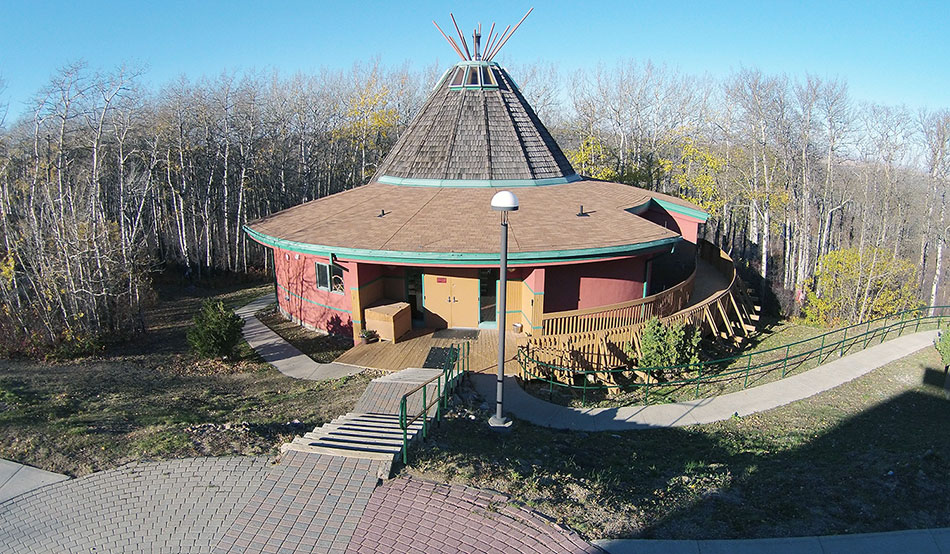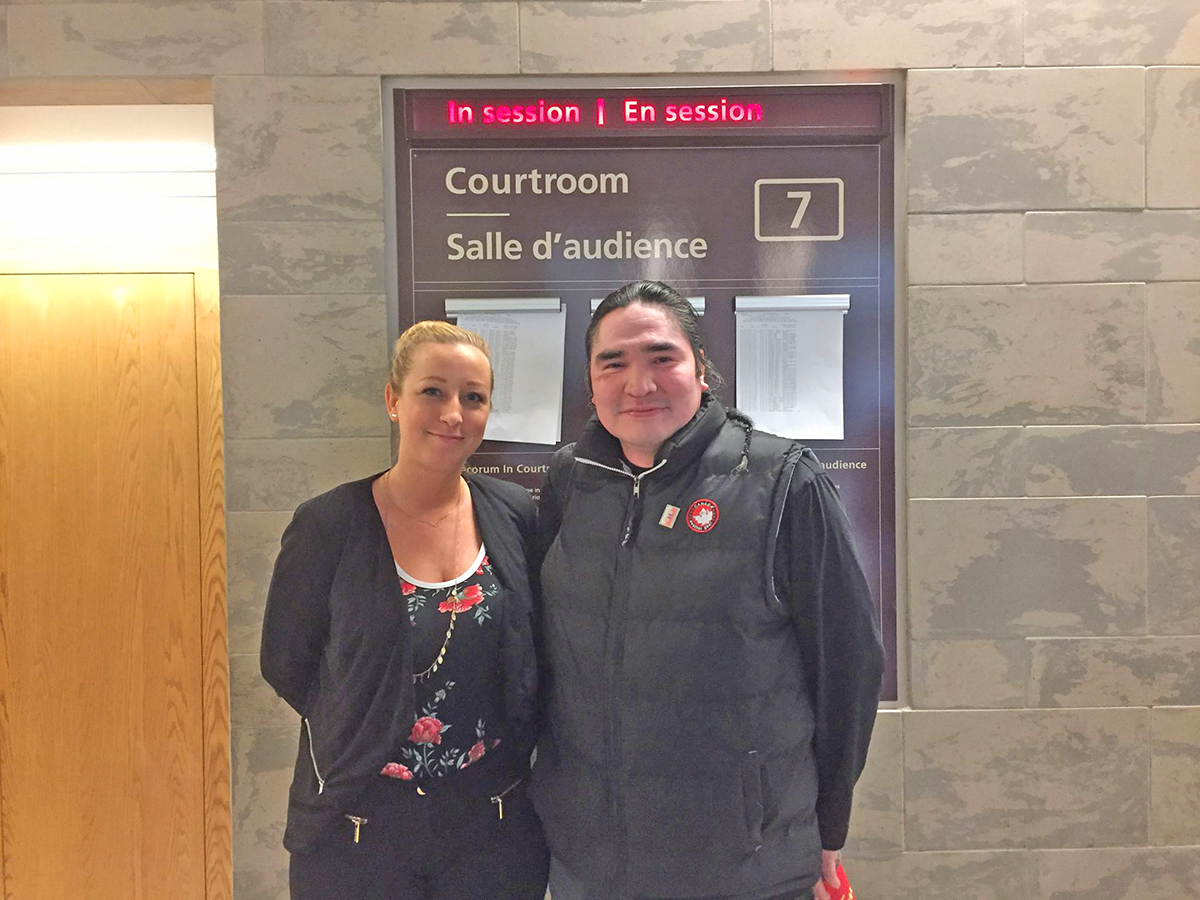Gladue’s effect on restorative justice
By Oliver Brown and David Sagolj

Okimaw Ohci Healing Lodge in Maple Creek, Saskatchewan was the first lodge created
in Canada. [Photo courtesy of the Office of the Auditor General of Canada]
The Gladue decision helped pave the way for enhanced restorative justice in Canada by instructing judges to consider options other than incarceration, particularly for Indigenous offenders, in recognition that there are too many in prison.
Restorative justice, which has existed for decades, goes beyond punishing offenders for their crimes by taking a community-based approach to addressing the harm that has been caused. There are programs managed by the federal government in prisons and others run on the outside by communities.
Healing lodges are one of the most high-profile initiatives. There are nine lodges across the country where offenders go through rehabilitative programs that involve Indigenous values, traditions, and beliefs.
Greg Meekis, a bail supervisor at Odawa Native Friendship Centre, says restorative justice is a way to “restore the balance that was in place before the wrong was committed.”
The traditional justice system “deals with the mainly black and white, the right and wrong, guilt and innocence,” he
says.
“When we become involved, we endeavor to try to answer the question why did this happen?”
Lodges appear to have an impact on reducing recidivism, according to a 2013 report by Correctional Services Canada, which found six per cent of Indigenous offenders re-offended after being released from a healing lodge, compared to 11 per cent of offenders who were incarcerated traditionally.
Jane Dickson, a law professor at Carleton University who focuses on Indigenous justice, says restorative justice is not just about violating the law.
“It’s about a violation of relationships, and ideally what our responses to crime and conflict should do is to address
those relational issues and to do that through providing an opportunity for grounded accountability,” she says.
Lori St. Onge, the Director Aboriginal Justice at the Mi’kmaq Confederacy of P.E.I., says that the process involves the the offender, community leaders such as elders, and the wider community.
“Once an individual understands how their offence has impacted not only the victim, but the community as a whole, then can they only understand what they need to do to fix it,” she says.
Lodges are operated by either Correctional Services Canada, or by communities themselves.
Dickson says this can affect funding levels and makes it difficult for community-run lodges to create strong support programming. She also says the fact that lodges are not spread out across the country is also a major problem.
“We know Ontario is one of the largest jurisdictions in the country, and Ontario doesn’t have a healing lodge,” she says.
Restorative justice can be found outside of healing lodges as well. The Pathways Initiative was created by Correctional Service Canada and operates like a healing lodge, but within the confines of a traditional prison.
The initiative relies on Indigenous elders to create intense programs that use extensive one-on-one counselling and an Indigenous healing path to rehabilitate offenders.
“The reality of the situation is not all offenders are going to be able to go to a healing lodge because of the
severity of what they’ve been sentenced with, but to have access within the prison system is probably the next best thing,” Meekis says.
“I’m very grateful for some of the mainstream prison systems to actually adopt that way of understanding.”
Sentencing circles are another restorative justice initiative, where the victim and members of the community have a say and their needs are considered along with those of the offender. The ultimate decision, however, is up to a judge.
Despite advancements in restorative justice, Indigenous people account for about a quarter of those admitted into custody, even though they make up five per cent of Canada’s population.
Although some restorative justice programs have been established for decades, there does not seem to be a consensus on how effective they are. Dickson says while restorative justice is a good idea in theory, it needs solid proof to support it.
“I sometimes think it reaches the point where we’re really throwing mud at the wall and seeing what sticks,” she says.
“Until we have real clear indications that restorative justice can have positive effects, I think we need to be cautious because you have to be careful that you don’t jump on a bandwagon.”
St. Onge says the restorative justice program is 100 per cent effective and is equally important both during and after sentencing.
“It’s important that they get access to traditional support in the system so that when we work with them, we will continue that support so they don’t drop through the cracks,” she says.
“Reintegration is the key for them, because if you look at traditional communities, it’s communities that support each other, so if you can support the individual, you’re supporting the community.”
Funding, however, is a perennial issue for community-based programs – and there are fears that some Ontario restorative justice initiatives could be next on a long list of cuts made the Ford government.
For example, one program that Indigenous community members in Ottawa fear could be in jeopardy is Kizhaay Anishinaabe Niin (I’m a Kind Man), which teaches a mandate of non-violence to Indigenous men who have gone through the justice system.
Jennifer Dalton, a former professor at the University of Ottawa, says that although Gladue and restorative justice programs help, there aren’t enough resources to reach their their potential in helping Indigenous communities.

Greg Meekis (with court worker Jennifer Valiquette ) believes the restorative justice system can give Indigenous offenders a second chance. [Photo © Oliver Brown]
Another issue, according to Meekis, is that restorative justice programs can be daunting for their participants.
“A lot of our people out there are not ready to look within themselves … to look at what’s really driving those behaviours, so it’s much easier for them to do the time,” he says.
For advocates like Meekis, the door will always be open for people who wish to turn away from a potential life of
crime.
“As long as somebody’s heart is beating, there’s opportunity for healing at that time and owning up to what has happened,” he says.
With files from Katie Jacobs and Jennifer Colavincenzo